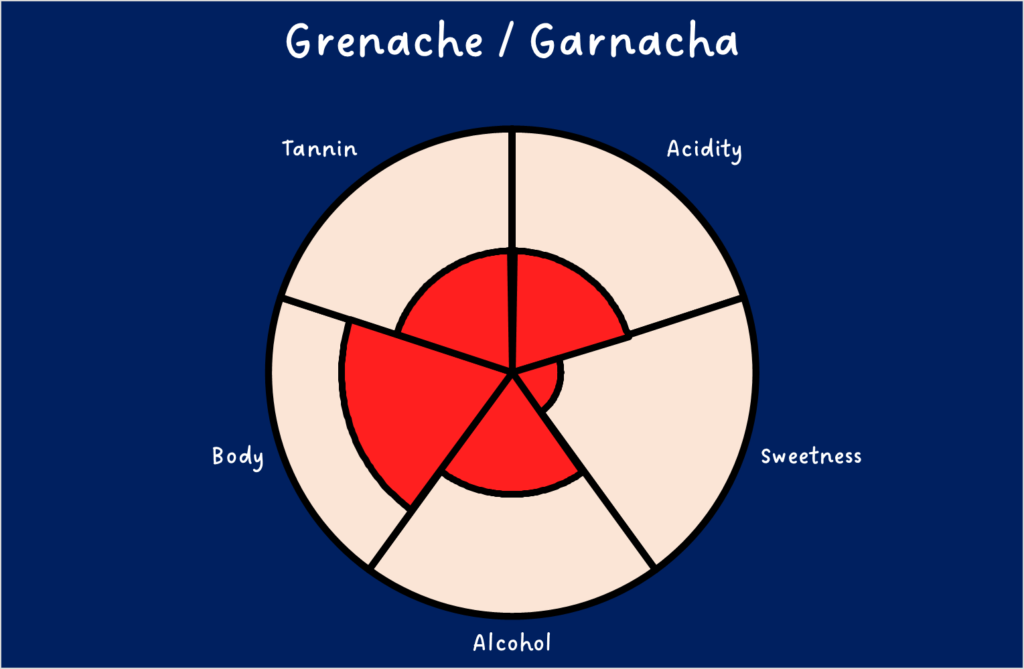
Grape varieties: Grenache
If you love Châteauneuf-du-Pape, you are likely a fan of Grenache or Garnacha as it is known in Spain. You may equally be a fan of the red wines of the Rhône, which are made using a blend of Grenache, Syrah and Mourvedre. Or even the red wines of Rioja, where it is blended with other red grape varieties. However, because its name appears on the bottle less frequently than other grapes, you may never have even heard of it! The grape can also make some surprisingly good rose wines.
About the grape
This thin skinned, slightly paled coloured, black grape is late ripening, meaning it tends to need a warm climate to do well. It tends to be one of the less generous vines in terms of fruit yield, meaning greater flavour concentration. This means this wine is usually naturally sweet. And if fermented to dryness, these high sugar level can result in alcohol levels hitting 15% ABV and more. Conversely, the acids tend to be low in the medium sized round berries (grapes) this vine produces.
Profile
This grape can take on characteristics of its terroir and flavours will depend on the extent of ripening. This wine can also be quite aromatic under the right conditions. As a general rule a dry style will have:
- Low to medium acidity
- Typically in style (unless making a sweet wine)
- Typically high alcohol
- Medium to full bodied
- Medium tannins

Typical flavours are of ripe fruit flavours – think raspberry, peach, cherry (red and black), and strawberry (sometimes jammy flavours). It can take on flavours of violets, cinnamon, dried herbs and leather. In the right conditions black fruit flavours (blackcurrant) and peppery spice can develop. Wines pair well with pork, lamb, mince dishes such as shepherd’s pie, as well middle eastern dishes.
Possibly the heathiest red wine
Cannonau Grenache nearly three times the number of flavonoids of other red wines. These additional antioxidants and anti-inflammatories offer significant health benefits. In Sardinia, there are a disproportionate number of people who live to 100+ years old, which is often attributed to a daily glass of Connonau. There are numerous studies linking moderate red wine consumption with lower blood pressure, and reduced cancer, diabetes and Alzheimer’s risk.
Treat it mean
Grenache actually thrives in dry, arid conditions where other varieties would struggle. Lots of sunlight, a lack of water, windy conditions, poor soils – you name it Grenache is totally un-phased! This is probably why this wine has found its way into some places which normally would not be associated with winemaking. It also means it is surviving global warming.
Production
As already mentioned, this wine is popular in France which accounts for almost 50% of all Grenache plantations. The other main location is Spain. This wine has even found its way into places such as North Africa (Algeria, Tunisia, Morocco, Egypt), Israel, Turkey and China.
So next time you dive into a bottle of Châteauneuf-du-Pape, Côtes du Rhône, or Rioja you’ll know the role Grenache plays in its production. If you enjoy these wine, you may wish to explore a bottle of Grenache and try this superstar as a single varietal. If you do, let me know how you enjoyed it. In the meantime, keep exploring this beautiful planet we live on, one glass at a time!